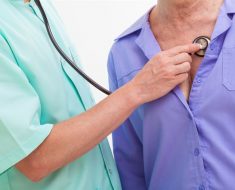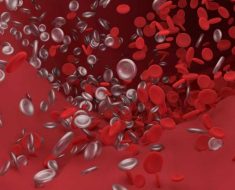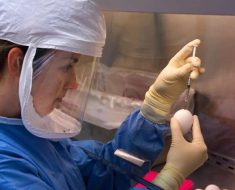According to the Centers for Disease Control, 218,527 people in the United States received a lung cancer diagnosis in 2015. Early diagnosis can help a person seek treatment, as early as possible, in the disease’s course.
Identifying lung cancer in its earliest stages can be difficult, however, because the symptoms may be similar to those of a respiratory infection, or there may be no symptoms at all.
In this article, we explain the nature of lung cancer, how to recognize the symptoms, and the ways doctors treat lung cancer before it becomes life-threatening.
What is lung cancer?

Cancer causes certain mutations in otherwise healthy cells.
Typically, the body programs cells to die at a certain stage in their life cycle to avoid overgrowth. Cancer overrides this instruction, causing cells to grow and multiply when they should not.
The overgrowth of cells leads to the development of tumors and the harmful effects of cancer.
In lung cancer, this pattern of cell overgrowth occurs in the lungs, which are vital organs for breathing and gas exchange.
Doctors typically diagnose two lung cancer types, small cell and non-small cell, depending on how they appear under a microscope. A person is more likely to have non-small cell lung cancer than small cell.
While anyone can develop lung cancer, cigarette smoking and exposure to smoke can increase the likelihood that a person will experience the condition. Lung cancer can develop if a person has a history of exposure to inhaled chemicals or other toxins.

Tissue sampling: If a doctor identifies a suspicious lesion on an imaging study, they may recommend taking a sample of lung tissue to test for potentially cancerous cells.
There are different ways to take a tissue sample, and the method often depends on the location of the lesion.
One example is when a doctor performs a bronchoscopy, which involves inserting a special thin, lighted scope with a camera on the end. This helps the doctor to see the lesion and then to obtain samples.
Less accessible lesions in the lungs may require a more invasive surgical procedure to remove lung tissue, such as thoracoscopy or video-assisted thoracic surgery.
Lab testing: A doctor may also order sputum testing or blood testing to check for the presence of lung cancer.
A doctor will use this information to determine what type of lung cancer may be present, and how advanced the disease has become.
The importance of early diagnosis
Early diagnosis of lung cancer can be lifesaving. This is because lung cancer cells can travel to other areas of the body before a doctor detects them in the lungs. If this spread or metastasis has taken place, it makes treating the disease much more difficult.
Sometimes, a doctor will recommend a person have lung cancer screenings. These are performed using a low-dose CT scanner. Not everyone is a candidate for this screening, but it can help doctors identify lung cancer earlier in some individuals.
According to the American Lung Association, people who may be candidates for lung cancer screenings are those who:
- are between 55 and 80 years of age
- are a 30 pack-year history of smoking, meaning they smoked one pack per day for 30 years or two packs per day for 15 years
- are a current smoker or smoker who has quit within the past 15 years
Insurance will often cover this screening if a person meets all these criteria. However, people should always check with their insurance company before signing up for lung cancer screening.

Lung cancer is the leading cause of cancer death, according to the American Cancer Society. An estimated 154,050 people are expected to die from lung cancer in 2018.
The disease carries a higher risk of death than breast, colon, and prostate cancer combined. It is also largely preventable through not smoking. Lung cancer is more treatable if diagnosed in its early stages.
The prognosis and outlook for lung cancer depend upon the cancer type and the spread. People should talk to their doctor who can provide a more accurate prognosis, taking into account the individual’s overall health and the extent of their cancer.
Takeaway
Lung cancer is a serious and potentially deadly disease that affects a person’s ability to breath.
However, early diagnostic screening of individuals who are at high risk for lung cancer can help them receive treatment in earlier and more treatable stages. The size and spread of cancer determine people’s outlook.
Treatment options include surgery to remove sections or all of the lung, chemotherapy, and radiation therapy, as well as targeted drug therapy.
If a person has concerns that they could be at risk for lung cancer, they should talk to their doctor.
Q:
What is the best way to prevent lung cancer?
A:
The best way to prevent lung cancer is not to smoke cigarettes or to quit smoking if you are a smoker.
Source: Read Full Article





